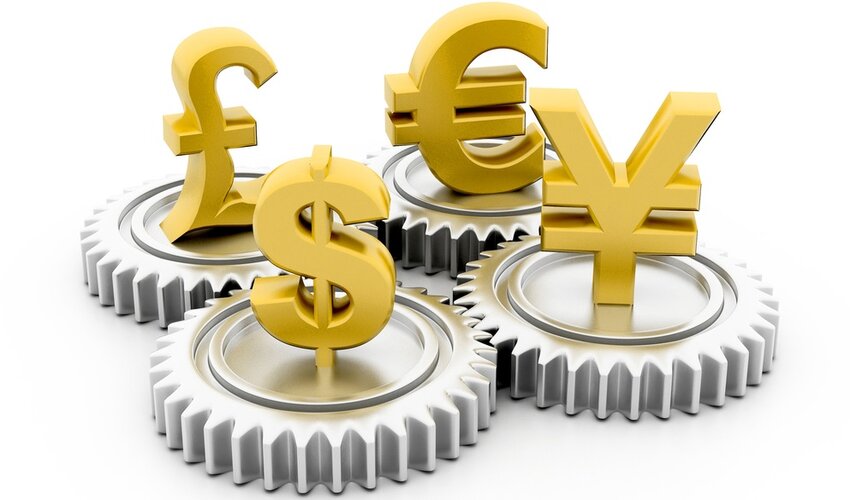
What is Forex CFD Trading?
Forex, or “foreign exchange”, is the world’s biggest financial market. The roots of the forex market can be traced back to the time when people started exchanging their home country’s currency with a foreign currency, either for travelling or for buying products and services. For instance, if you’re travelling from the U.S. to Japan, you’ll exchange your dollars for yen. It is important to note the current rate of exchange between the two currencies plays a key role in this process. Later on, this concept evolved into the modern forex market, where people buy and sell various international currencies to profit from exchange rate fluctuations. Those who are new to forex can use a currency calculator to understand the concept of currency conversion better, and you get accurate results based on current exchange rates.
Now, let’s talk about CFDs, the “Contract for Difference”. It gives you the right to trade an underlying asset and make profits from price fluctuations without actually buying it. Forex CFDS also work the same way, and here, the underlying trading instrument will be various international currency pairs offered by brokers. CFD trading provides easier access to the currency market and allows us to speculate on currency price movements without owning it in the first place.
The Benefits of Forex and CFD Trading
1. Leverage:
Think of leverage as a credit line from a bank. Let’s say you want to invest in a business but only have $10,000. The bank offers you a credit line. This will allow you to invest as if you had $100,000. In CFD trading, leverage gives you similar power. With a small amount of your own money, you can control a much larger position in the market. You get a chance to make bigger potential profits, but there is also a chance to make potential losses if the market moves against you. It’s like amplifying your trading power, but with it comes amplified risks.
2. Flexibility:
The flexibility offered by the forex market can be attributed to two things: trading hours and trading opportunities. First of all, the market is open 24 hours a day throughout the week except on weekends and special global holidays. The market hours are divided into 4 major trading sessions to make it work with the timezones of major economies like the US, EU, Japan and Australia. Hence, traders from around the world can pick a suitable session to trade and choose their time frame based on their preferred trading style.
The forex market offers a lot of flexibility in the case of trading opportunities as you can make profits from both falling and rising markets. Suppose you are trading with the EUR/USD pair and you see the possibility of an uptrend and go long on the pair by opening a buy position. But you will get to make some profits even during a downtrend as you can go short on the pair.
3. Diverse Opportunities:
Traders can choose from a wide array of currency pairs, ranging from major pairs like the EUR/USD or the minor pairs, consisting of currencies of some top economies, but don’t include USD as the base or quote currency. There are exotic pairs as well, which consist of currencies from growing economies, and these pairs can be highly volatile and less liquid. They are suitable for traders with a high-risk appetite. As a trader, you can choose which currency pair you want to explore depending on your market insights and risk tolerance.
What are the Risks of Forex and CFD Trading?
While Forex and CFD trading can seem exciting, there are risks associated with it that all traders should be aware of –
- Amplified Losses: Let’s say you decide to use 100:1 leverage on a capital of $1,000. This means you’re controlling a $100,000 position in the market. Now, if the market moves just 1% against your trade, you’d lose $1,000, which is your entire initial capital. Without proper risk management, such as setting a stop-loss order, you could even end up owing more money to your broker if the market continues to move against you.
- Overnight Charges: Let’s assume you open a position in the EUR/USD pair, betting the euro will rise against the dollar. If you decide to hold this position overnight, you might be subject to the interest rate differential between the euro and the dollar. This differential, known as the swap or rollover rate, could be a charge or a credit to your account, depending on the direction of your trade and the interest rate difference. If not accounted for, these charges can accumulate and significantly impact your trading profitability over time.
- Market Volatility: Imagine you’re trading the GBP/USD pair, and suddenly, there’s an unexpected political announcement in the UK. This could lead to a rapid appreciation or depreciation of the pound within minutes if you’re not prepared with risk management tools like a stop-loss or take-profit order; such sudden market movements could result in substantial losses.
How Do You Trade Forex CFDs?
1. Prioritize Education:
As we understood, CFDs can be a complicated asset to trade. Thus, diving into this without a proper understanding is risky. For instance, without knowledge of how a sudden political shift in a major economy can sway currency values, you might find yourself blindsided by abrupt market fluctuations.
Thus, it’s imperative to arm oneself with knowledge. Seek resources that shed light on market trends, effective strategies, and essential risk management techniques. Grasping economic indicators, such as GDP growth or interest rate shifts, can equip traders with a predictive edge in the market. And do not forget to develop a learning habit, as there is always room for improvement in trading.
2. Partner with a Trustworthy Broker:
There are several brokers in the world of forex and CFD trading, and each of them is different in one way or another. However, most of them have their agendas while offering services. You need to be picky here because a reputed broker will contribute to your overall trading experience. Their knowledge, resources, and assistance can make the difference between a successful and unsuccessful journey.
It’s wise to research and select brokers renowned for their reliability, stellar customer support, and user-friendly trading platforms. Also, pay attention to the trading tools offered by the broker because most traders look for tools like trading calculators and currency converters, as they make trading much easier. Besides these, opt for a broker who offers competitive spreads, especially on major currency pairs, as these can translate to substantial savings in the long run.
3. Initiate with a Demo Account:
The magnetic pull of Forex CFDs often tempts many to plunge directly into live trading. However, venturing into the real market without a grasp of its intricacies is an invitation to loss. Starting with a demo account is a sensible first step
Without risking real money, it provides a sandbox environment where one can become familiar with market patterns, the nuances of the trading platform, and their trading style. Demo accounts are a great tool for testing different tools and indicators. Users can calculate different trading values with them and adjust their plans and strategies for maximum results.
4. Carve Out a Robust Strategy:
While some traders swear by their instincts, navigating the Forex CFD domain based solely on intuition is risky. A structured strategy ensures that you don’t make decisions based on mere whims. For example, a trader well-versed in technical analysis can anticipate a potential downturn with heightened assurance upon spotting a recurring pattern like the double top.
Investing time and effort in crafting a solid strategy is paramount. Whether you lean towards technical analysis, fundamental scrutiny, or a blend of both, consistency is key. Yet, it’s equally vital to remain agile and adapt to the ever-shifting market tides.
5. Embrace Comprehensive Risk Management:
The inherent volatility of the Forex realm implies that currency values can oscillate wildly within short time frames. In the absence of protective measures, these fluctuations can wreak havoc on a trader’s account.
The best way to prevent losses from happening to your account is through risk management.
You need to use risk management tools like stop-loss orders, which automatically liquidate a position upon reaching a specified threshold, and take-profit orders that secure gains at desired levels. In addition to this, you should also pay attention to risk/reward ratio, position sizing and using limited leverage to minimize potential losses.
Wrap Up
Forex and CFD trading offers a world of opportunities to new and experienced traders alike. In this article, we have talked about how you can go about trading forex CFDs. While the benefits are numerous, the risks are equally real. Therefore, you should weigh both the pros and cons and make your call depending on your risk and knowledge.

Aimee Garcia is a Marketing Consultant and Technical Writer at DailyTechTime. She has 5+ years of experience in Digital Marketing. She has worked with different IT companies.

